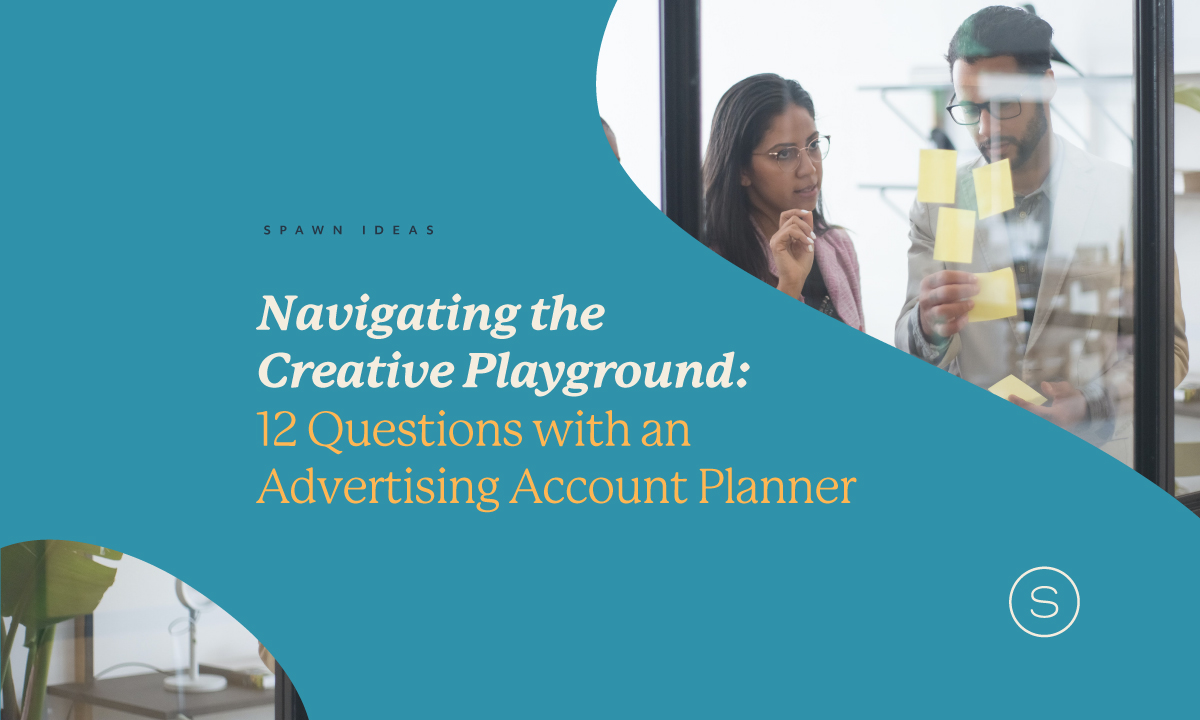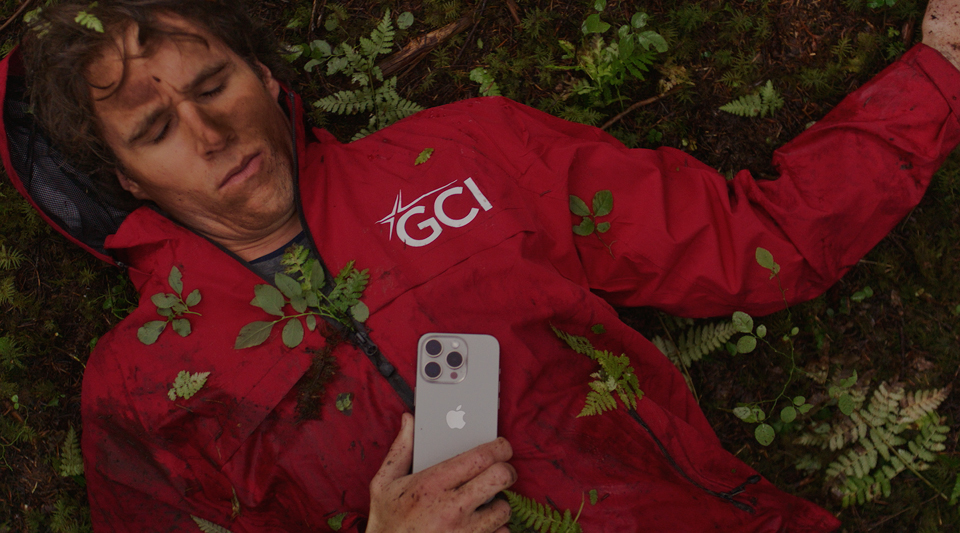Written by Neil Slotterback, Planning Director, with introduction by Siobhan Johansen, Content Manager
It’s that time of year. Planning season. 2024 is just around the corner, and it’s time to put client marketing plans in place for the new year. What better time to have a conversation with Planning Director, Neil Slotterback, about the journey of an advertising account planner? Our conversation explores the inspiration behind choosing this career path, the crucial responsibilities involved, and the collaborative process of planners working with creative teams. After reading this, you’ll have a comprehensive insight into the world of advertising strategy and planning.
1. Please explain your role as an advertising account planner in simple terms.
An account planner is a research and consumer insights expert. They use data to craft strategies that establish the right context for a message or creative idea to have the greatest impact.
2. What inspired you to pursue a career in advertising and become an account planner?
Probably as early as high school I became really interested in business and marketing. I was also really involved in the arts and athletics growing up, so there was always an underlying passion for creativity and being driven by an athlete’s mindset. And in the 1990’s, brands like Nike wowed me with just how well they “got me” as a young athlete and motivated me to keep going. That’s the power of a great brand. Fast forward to my senior year in college when my integrated marketing class took a trip to visit the Martin Agency in Richmond, VA, and the dots finally connected. I thought: there’s a job that exists that combines business smarts with creativity with responsibility to figure out how to make brands relevant to people and improve how they show up in their world. That was a big lightbulb moment for me. So from that field trip on, I redirected my career path to learn how to become a planner, went to graduate school, and then eventually became one.
3. What do you consider to be the most important responsibilities of an account planner?
An account planner acts as the steward of the brand and voice of the audience. So, by being involved in the making of creative communications, a planner has to bring a vision for how the brand should behave and have the intuition to know whether that particular vision is something the audience will want to participate in.
4. How do you go about understanding a client’s business and goals when starting a new project?
Because a singular campaign or assignment may not give you the full window into what the business aspires to be, or what goals are the most critical to its success, I’ve always found it valuable to explore the company’s mission, vision and values to better understand what their higher ambitions are. A great starting place is an annual report, or even shareholder letters. Those can be goldmines.
5. Can you describe your process, with an example, for conducting market research and gathering consumer insights?
A good way to start is to ask “why?” Because it can be fairly easy to pull just about any stat from the Internet, it’s important to keep your interrogation hat on throughout and be willing to challenge some basic assumptions about consumer behavior. That’s why I love to start by reading provocative takes or opinion pieces you might see in The Atlantic, The New York Times or Wired. It’s in some ways a shortcut, because those are well-researched articles and can really jumpstart your understanding of the “why” behind the “what.” From there, I like to go a layer deeper and understand how and why people out in the world care about the subject I’m researching. I might use places like YouTube, Instagram or TikTok to provide a glimpse into their world and get a better grounding of what their experience is like.
6. How do you work with creative teams to develop compelling advertising campaigns?
As a planner you set the strategic direction for a campaign and work to define the creative sandbox that creative teams get to play in. And as counterintuitive as it might sound, these constraints can be creatively freeing. They narrow the possible creative solutions to reach only those that can meet the objectives we’re hoping to achieve.
So after crafting the creative brief, my job is to continue to populate that sandbox with the (metaphorical) tools and toys that creative teams can use to be more successful. Sometimes it’s gathering even more insights on the audience or providing creative references to further inspire. I’ve also contributed creative ideas against my own briefs in the past. All of which to say, the usefulness of a planner doesn’t end once the team has been briefed.
7. What tools or methodologies do you use to identify target audiences and their behaviors?
A syndicated research tool like MRI/Simmons or YouGov can be great at building an audience through their shared beliefs and behaviors. Outside of those, you might rely on your own or a client’s survey data to both quantify and get a richer understanding of who the audience is.
8. Can you provide an example of a particularly challenging project you’ve worked on and how you overcame the obstacles?
In 2020, I was working on an assignment for a global B2B technology company whose latest software release could help enterprise companies better plan for and organize their employees’ safe return to work. This was very much in the middle of the pandemic and every week there were new surveys that described many workers’ fear or general unwillingness to return to an office. Others craved the camaraderie of their teams. It was a very strange time, and there were no established rules for how to navigate the unease we all felt. So the best path forward on that assignment was to lead with an abundance of empathy, meet our audience where they were, and be sensitive to the vulnerabilities that the audience felt at that critical moment in time.
9. How do you stay up-to-date with the latest trends in a given industry and consumer preferences?
It helps to be curious and be a dedicated reader of the news. I also listen to business podcasts, browse social media on occasion, stream shows, music, and movies to understand what’s popular, and watch live sports because that’s where most of the new and noteworthy commercials are.
10. Can you share a successful campaign you’ve been a part of and explain your specific contributions to its success?
Very early in my career I had the opportunity to work on an Ad Council campaign designed to raise awareness of the resources available to the millions of caregivers in America. The challenge was that many people who provided care to a loved one often didn’t see themselves as a caregiver. They just saw themselves simply as a daughter, son, friend or neighbor. So our job was to have more people begin to self-identify as caregivers and connect them with local resources that could help them better navigate what can be a very demanding and emotionally trying journey. My role in that campaign was to identify the human insights that could inform a more empathetic understanding of the audience, and then craft a creative strategy to reach them. The caregiver campaign continues to run more than 10 years since its launch, and every so often I’ll see it out in the world, which means it continues to make a difference in the lives of caregivers and their families.
11. What motivates you to excel as an advertising account planner, and what do you find most rewarding about your work?
A great planner can find simplicity in complexity, so that’s what I aspire to do each day.
12. Can you provide insight into any current or upcoming advertising trends or innovations that you find particularly exciting?
I am blown away by the power and potential of Artificial Intelligence, specifically generative AI. And, as an industry, we are only beginning to scratch the surface as to how to apply it to our processes and our creative output. I think that’s the space for all of us to not just watch, but to really explore.
Neil Slotterback is a favorite Spawn freelance planner. He has over 13 years of brand strategy experience at some of the West Coast’s most creative agencies, including BSSP, BBDO San Francisco and Venables Bell and Partners. He’s had the privilege of leading great brands, such as MINI, Microsoft, T-Mobile, Wells Fargo, ServiceNow, Meta, and WhatsApp. He is also an avid runner and golfer, but never at the same time. A graduate of the University of Richmond and co-captain of the Track and Field team, he went on to obtain a Master’s Degree in Mass Communications from the VCU Brandcenter.






